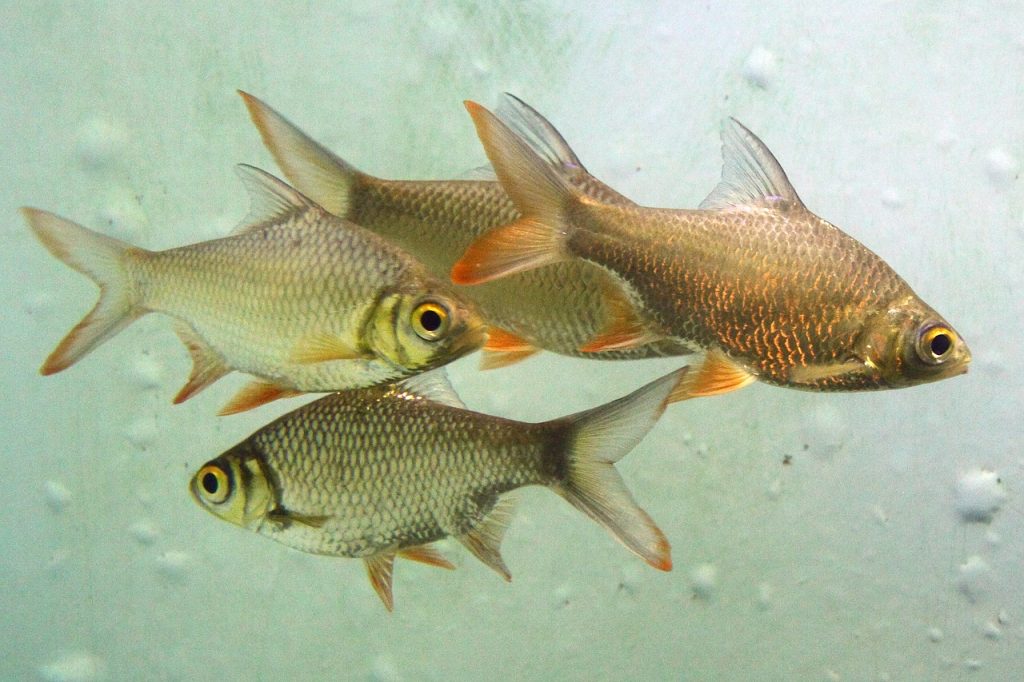
Source: pixabay.com | PublicDomainPictures
The Tinfoil Barb (Barbonymous schwanenfeldii) is one of the larger of the barb fish topping out at about 14 inches. It gets its name due to its long, slender, torpedo-like body that has a shimmery silver or sometimes gold coloring. This fish is also known as the Goldfoil Barb or the Schwanefeld’s Barb.
These fish’s native habitat are the waters of Thailand, the Malayan Peninsula, Sumatra and Borneo.
Table of Contents
Tank Considerations
The Tinfoil barb is an easy fish to care for, but due to their large size, they’re not suited to the beginning hobbyist because of the large tank they require. They’re a schooling fish so plan on keeping 5 or more in a tank of at least 225 gallons. Additionally, because they’re so big, they do put out a lot of waste, which means you’re going to need ample filtration to keep the water pristine. It’s recommended that you go with an outside canister filter to keep the water flowing, well oxygenated and clean.
It should be noted too that these fish are notorious jumpers so make sure you have a secure hood with no gaps they can squeeze through.
These fish are very active swimmers and will need plenty of free swimming space.
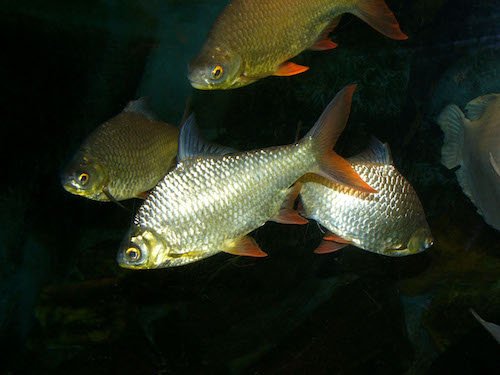
Source: theonlinezoo.com | Jeff Whitlock
In the wild, the Tinfoil Barbs inhabit river and stream waters that flow, so to make them happy, plan on replicating that at home with the use of powerheads to generate a slight current. Decorations also need to be sturdy as they’re known to knock things over due to their large size. Make sure your driftwood is firmly secured to the substrate. Lastly, if you’ve spent time crafting a meticulously planted tank, you can probably kiss that goodbye because these fish will eat up everything you have save for the hardiest of aquarium plants.
The Tinfoil Barb is a relatively peaceful fish, but caution should be taken if you’re housing them with small tank mates because they will eat them if they get the chance. Also, slower moving fish can become stressed around Tinfoil Barbs because of how quickly they dart around the tank.
As mentioned, these fish can be messy, so it’s recommended that you change at least 25-50% of the tank’s water every month. If you have a lot of fish stocked in your tank, then plan on changing 20-25% of the water every other week. As always, you should perform regular water tests to monitor pH and hardness levels and act accordingly should there be any drastic changes. The water these fish prefer is as follows: Temperature 72-77˚ Fahrenheit, pH 6.5-7.5, hardness 2-10 dGH.
Health and Care
Like many barb fish, the Tinfoil Barb is very hardy and doesn’t easily succumb to fish diseases, however that’s not suggesting you can put them in the tank and be lax about maintaining water quality. Given the wrong conditions, these fish can get sick just like any other freshwater tropical fish.
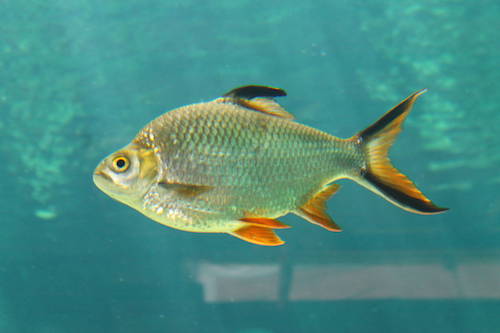
Source: zoochat.com | Zooish
The most common disease affecting this fish is Ich, which is also called White Spot Disease. This can be brought on by poor water quality, a poor diet, stress and bacteria that comes in from the outside.
The rule of “an ounce of prevention is worth a pound of cure” applies to aquarium fish. If you’re vigilant about maintaining proper water quality, feeding them a nutritious diet and quarantining anything you bring in from the outside before placing it in your tank, these fish should live happily and disease free for as long as you keep them.
Diet
Like many freshwater tropical fish, Tinfoil Barb fish are omnivores and like to eat all kinds of plant and animal matter in the wild. In the home aquarium, a high quality flake food should make up the bulk of their diet along with meaty treats such as brine shrimp (live or frozen) or worms now and again. It’s also good to give them vegetable-based foods such as cooked lettuce, algae wafers, spinach and even oatmeal. Feed them 3 times a day and no more than they can eat in 3 minutes to keep waste to a minimum.
Breeding
It is very difficult to identify the sex of these fish as there are no visible differences between males and females.
As with other barb species, the Tinfoil Barbs are egg layers and will scatter eggs as opposed to putting them all in one place. However, because of their size, they have not been successfully bred in the home aquarium as of this writing and are only bred at commercial locations that have the space and capacity to handle large specimens.

Source: wikimedia.org | Ginkgo100
Summary
- Fish Size: 14 inches
- Tank Size: 225 gallons
- Diet: Omnivore
- Water Temperature: 72˚ – 77˚ Fahrenheit
- Water pH: 6.5-7.5
- Water Hardness: 2-10 dGH
- Breeding: Difficult
The Tinfoil Barb is a beautiful fish especially when you see a group of these large, silvery fish darting back and forth through the water. However, because of their size, they’re rarely kept in the home environment. However, if you have the room and the finances to keep these fish, they can be an impressive addition to your freshwater setup and will surely impress guests who come into your home.
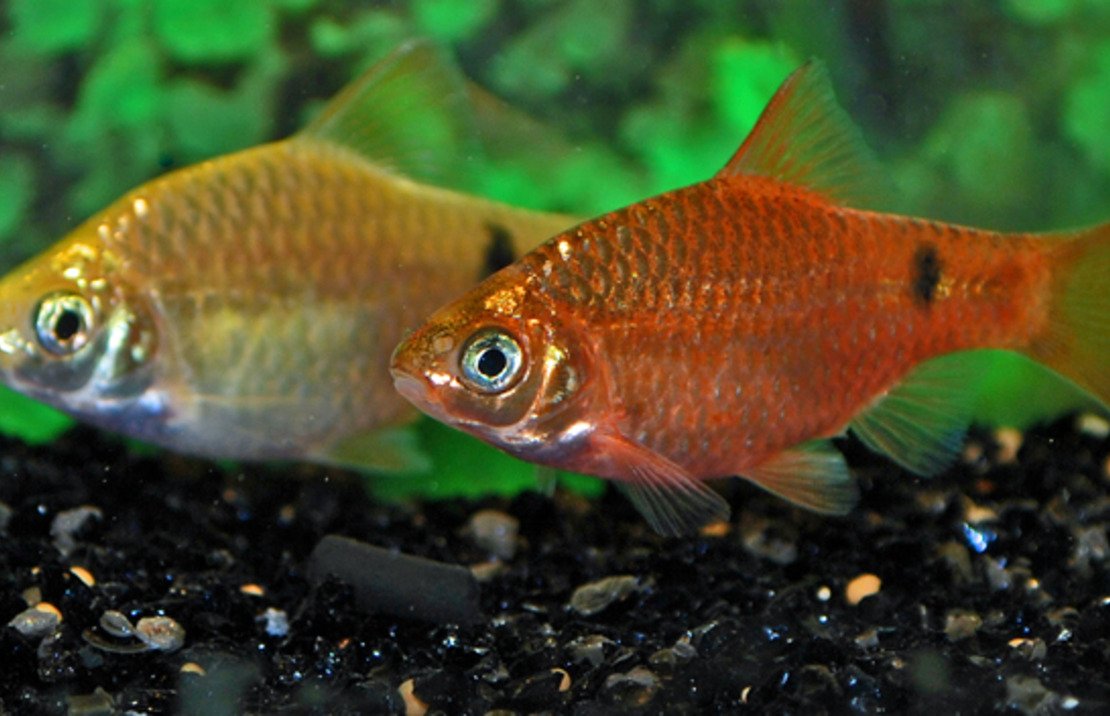
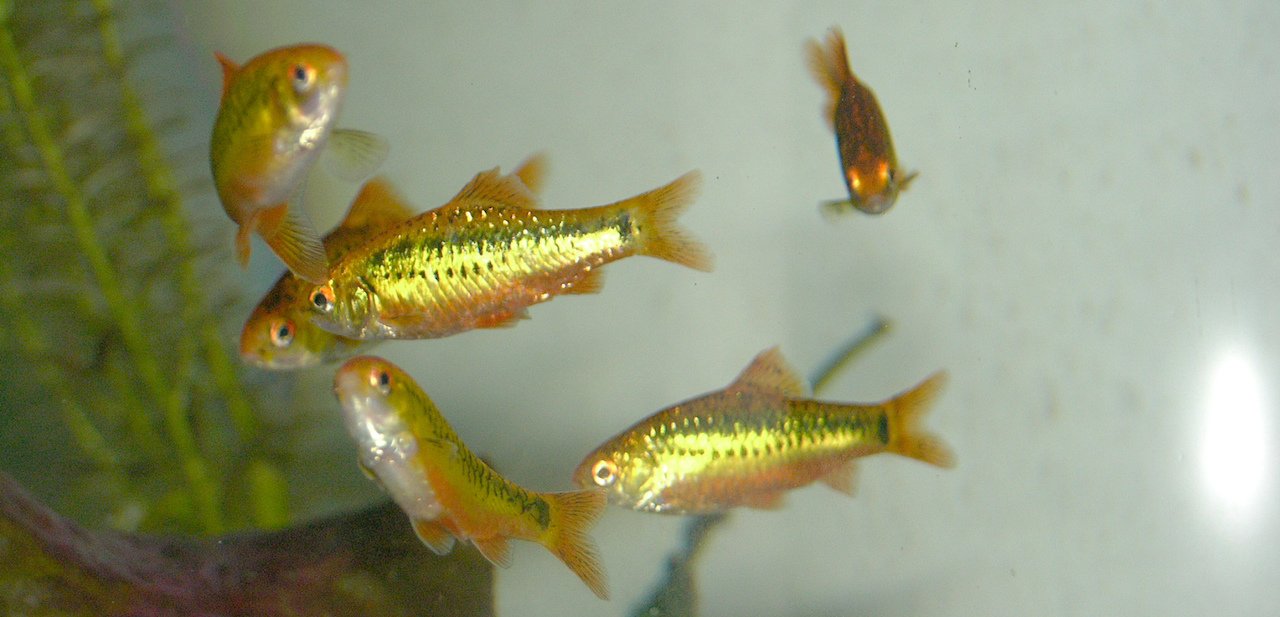

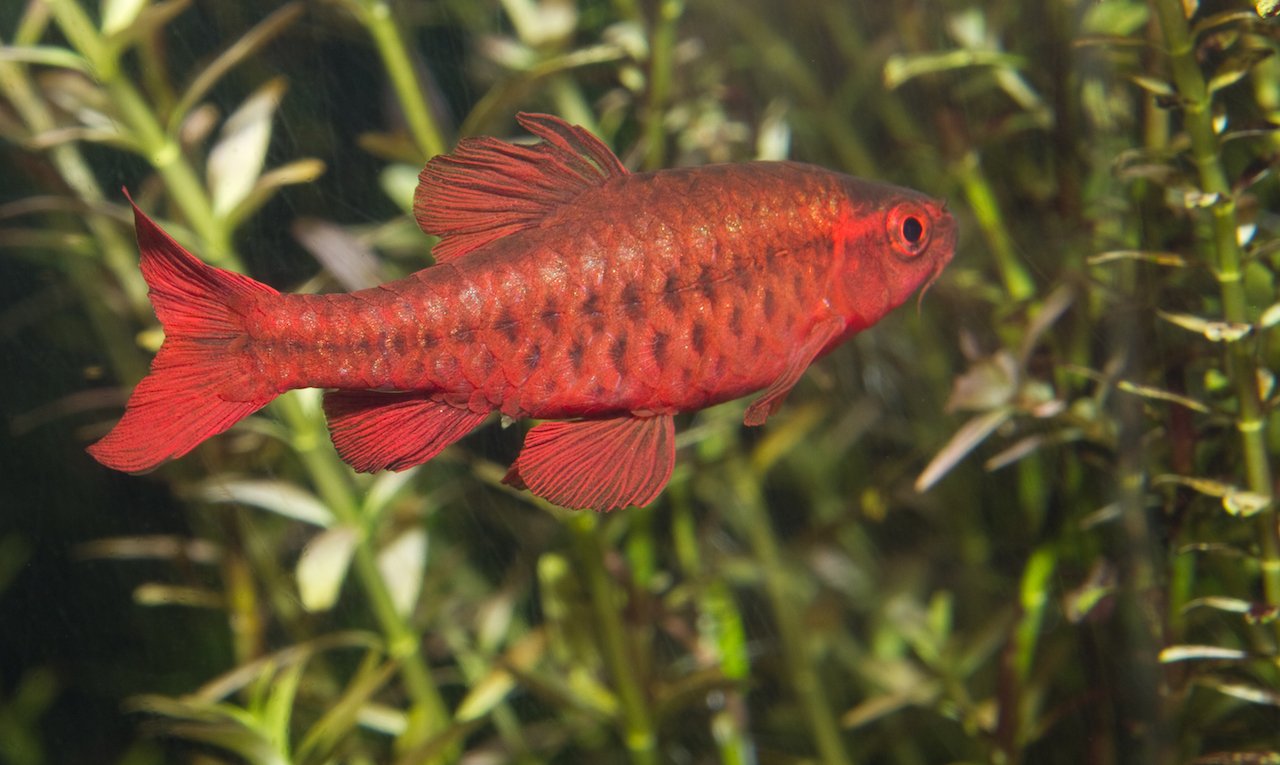
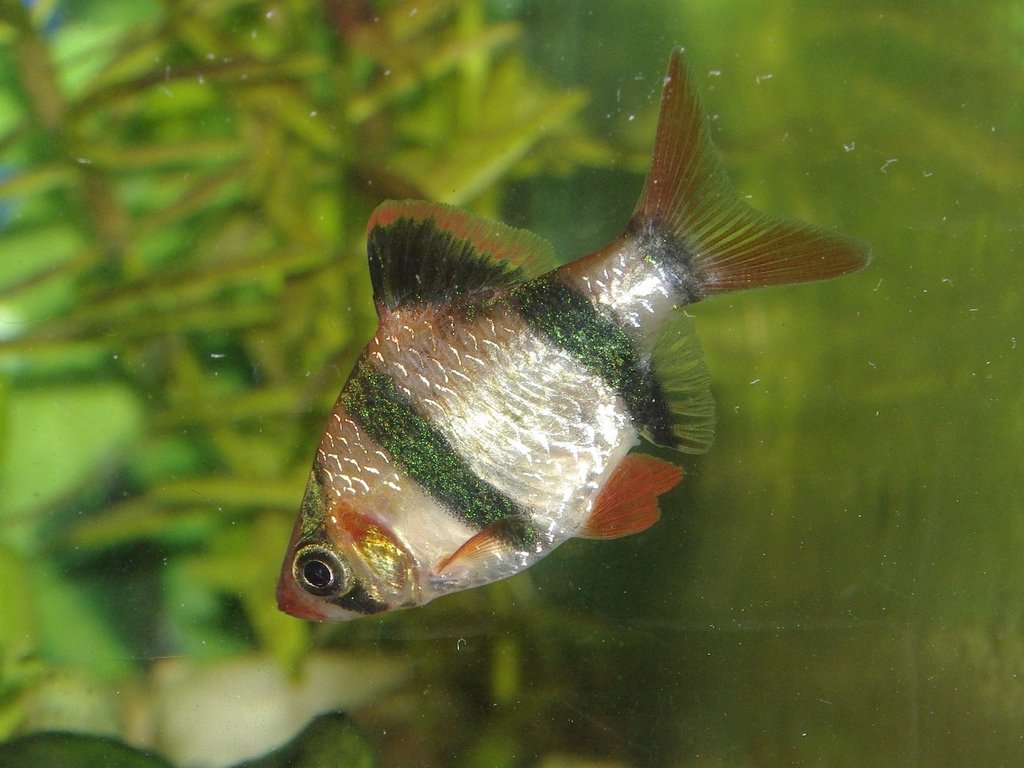

Leave a Reply